Greig's tulips: characteristics of the species and features of its cultivation
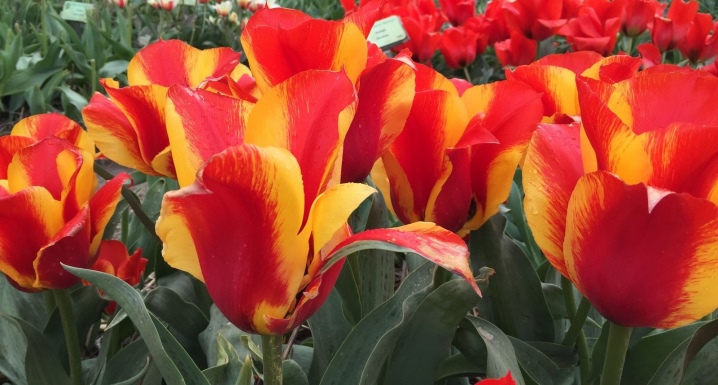
Tulips are flowers that are among the first to decorate flower beds in early spring. Breeders managed to create many hybrids that delight with the variety of palette and the shape of the buds. Greig's tulips are the most sought after.
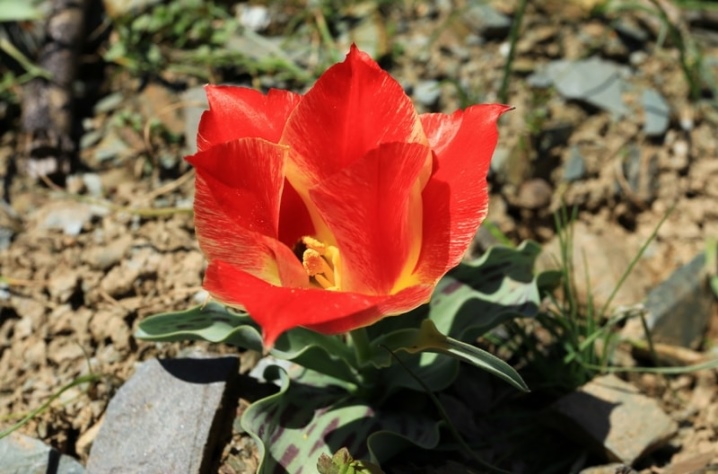
Description
There are more than 100 varieties of Greig's tulips in the list, each year the list is slowly increasing, new interesting hybrids appear. They are based on a wild species, which was discovered in 1868. A detailed description of the flower was made only by 1873. Then they began to cultivate it, and after 5 years the variety was recognized as first-class and was awarded a diploma.
Most of all, this type of tulip is widespread in Kazakhstan and Holland, but in our country, plant breeders love to see it in flower beds. If we talk about modern varietal diversity, then at the disposal of professional gardeners there are 286 varieties. Of these, only 120 varieties are widespread, others are difficult to get, since they are rare, but they can be found in the botanical garden.
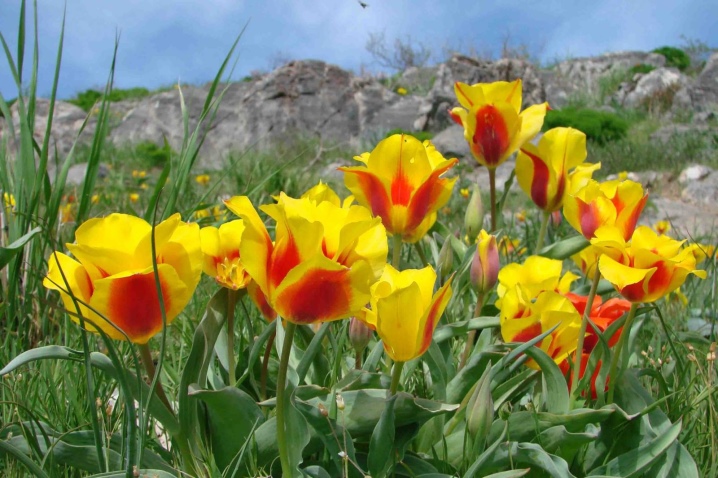
These varieties are very fond of collectors.
The decorativeness of Greig's tulips is worthy of all praise. Bushes grow small both in height and width. Group plantings look best, especially with the use of different varieties. You can combine tulips with other dwarf plant types.
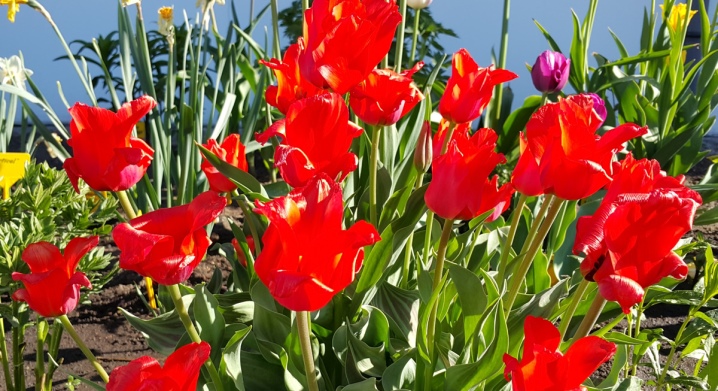
The average height of these flowers reaches 400 mm. Breeders have also managed to breed tiny varieties, they are best planted alone or in the foreground of a flower bed. Greig's tulips have wide leaves. Their shade is juicy and beautiful, stripes of red or lilac flaunt on the surface. Foliage grows from the roots, sometimes its length can be longer than the stem.

Flowers differ in color depending on the variety, the red palette is most represented. The flowering period can also vary. Sometimes buds appear in the second half of spring. Most varieties bloom in early summer.
Views
Among the numerous varieties, only a few more others are in demand by plant breeders.
- Ali Baba. Small tulips that are best planted in large groups. The stem is straight, the foliage is wide and large. The plant blooms for about 21 days, it begins to delight with its splendor in early May. Although the dimensions of the bush are small, the buds are large, up to 100 mm high. The shade is fiery, the color is darker in the center. This species reacts negatively to a drop in air temperature.

- Orange Toronto will delight you with a long flowering period, the buds begin to form by the beginning of May. The height of the stems can reach 300 mm, the buds up to 90 mm in height. Basal foliage, like the rest of the species, has purple stripes on its surface. The petals are orange-red in color.
The advantage of the variety is its resistance to frost.

- Pinocchio. Growers loved this flower for its two-color nature. The main color is crimson with a red tint, along the edges there is a white border. The height of the bushes is only 250 mm, flowering begins in late spring. The height of the glasses at the buds is 80 mm.
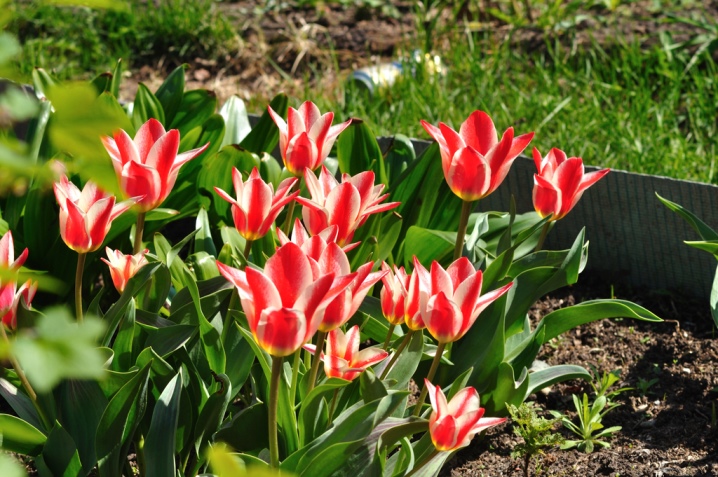
- "Toronto". On its basis, breeders have bred several hybrids specifically for bouquets and flower beds. The flower with the prefix "Double" is especially popular due to its double flowers. The variety has its own peculiarity: bright red petals can fade in the sun.
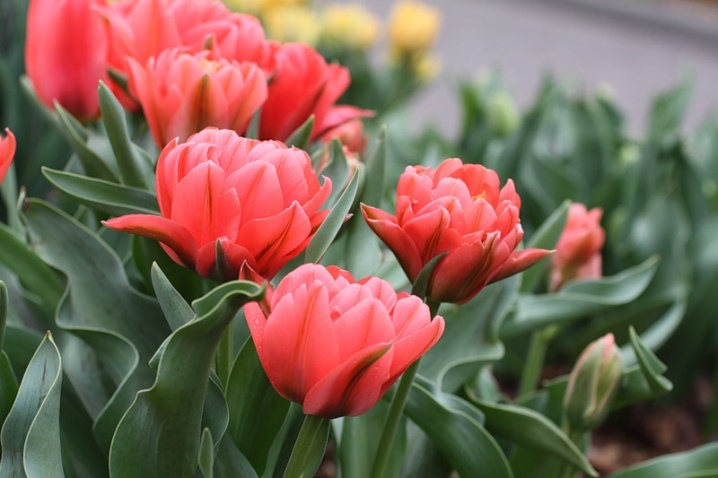
- Sweet Lady. This is a late flowering representative that is capable of producing buds for a month.It looks great as a decoration for borders, it is not suitable for forcing, as it grows for a long time. Maximum height 300 mm, goblet buds, height up to 80 mm. The shade is unusual: a cross between orange, red and pink. At the base of the bud, the color brightens.
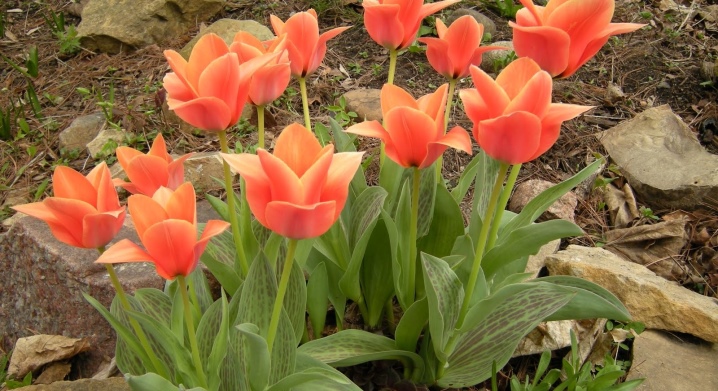
- Oriental Splendor - this is a rare variety, hence the high value of the tulip. It is recommended to grow it to experienced growers, since it is quite capricious. The dense stem is decorated with light-colored basal foliage with dark green stripes. The diameter of the buds is 50 mm, the height is 80 mm. Peach-orange color predominates on the petals, the edges are yellow.
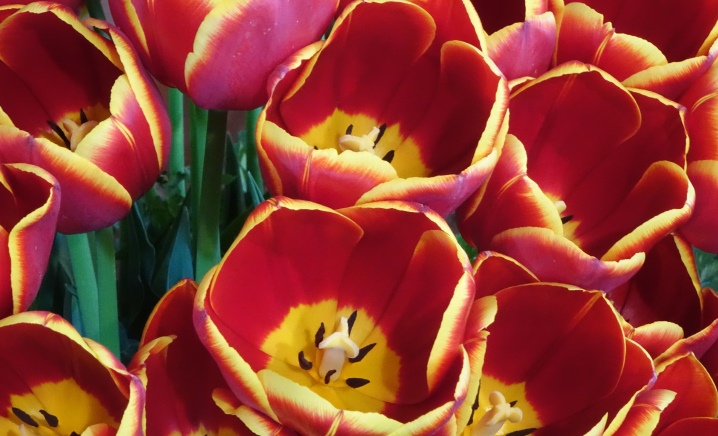
Planting and leaving
For planting, the seed is carefully sorted out. The bulbs are sorted by size. All soft, damaged ones are disposed of. Each tulip bulb produces only one flower. The planting process takes a long time as it is manual labor.
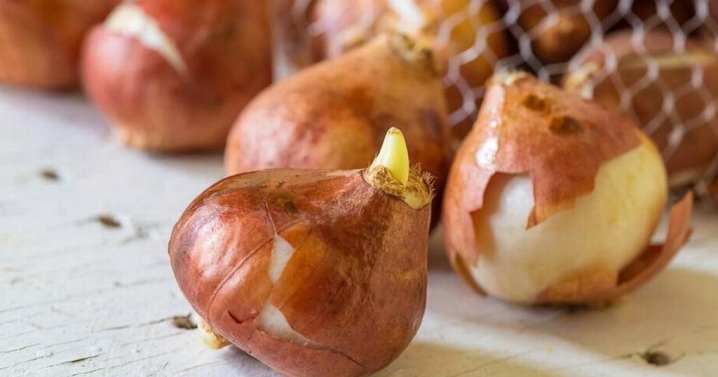
The correct planting site for tulips is very important. These flowers love to be kept in dry, well-drained soil. Too much water in the soil will cause the bulbs to rot. Before planting, the tubers are advised to be treated with a manganese solution to protect against fungal infections.
Tulips need a lot of sun, so they choose an open area without the shade of trees. In the south, the daily rise in air temperature will need to be taken into account. In these regions of the country, you can plant flowers where the sun appears only in the afternoon.
Planting depth is also important.... Large bulbs should be planted 25 cm deep, small ones 12 cm. It should be borne in mind that organic matter is placed at the bottom of the planting pit. Tubers are planted with the pointed end up.
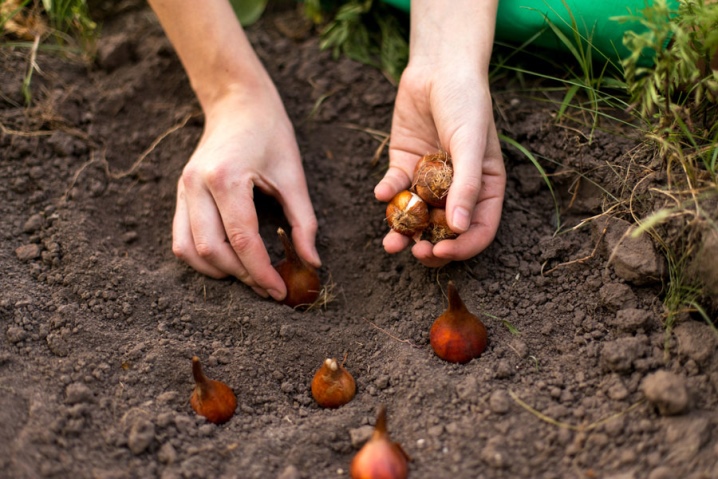
It must be remembered that the wrong time for planting and non-observance of the depth of immersion of the tubers will lead to a lack of flowers in the spring. The bulbs need to be submerged in the soil a couple of weeks before the expected first frost so that they can germinate a little and stop. In the spring, as soon as the soil warms up to the required temperature, the first leaves will begin to appear on the surface one after the other.
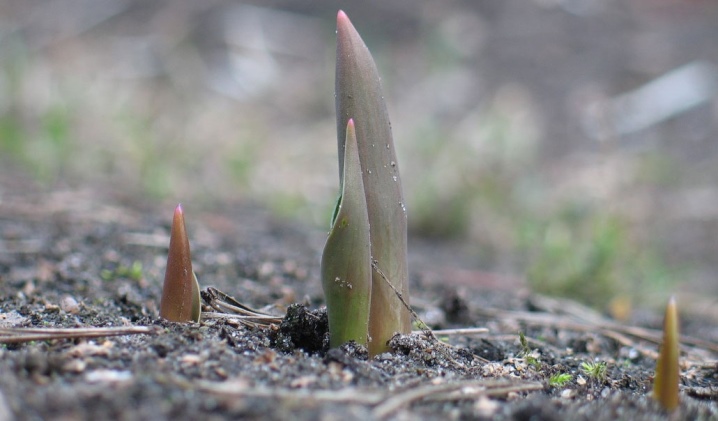
Fertilizers are best applied at the time of planting. Organic blends with a long decomposition time are ideal for this. For the entire vegetative period, they will be able to provide the plant with the necessary minerals and vitamins. Since tulips have a short flowering period, a small amount will be sufficient.
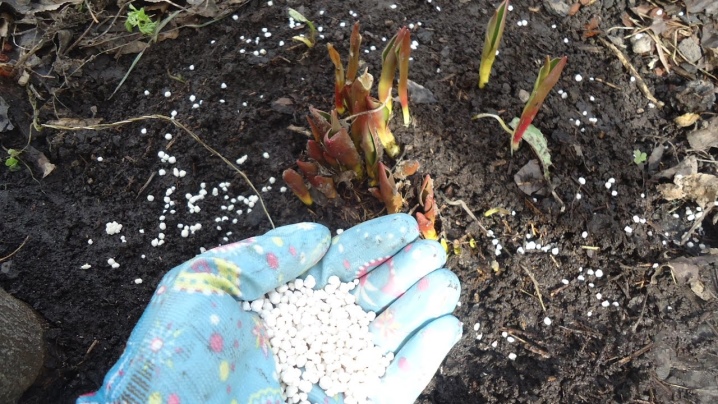
Watering is carried out every week, but it is worth focusing on the weather conditions. The soil should be slightly damp, however, water that constantly stagnates will only bring problems and fungus. High humidity combined with a positive air temperature is a favorable environment for the development of fungus and other infections. Most of them can be treated early with fungicides. Bacterial lesions are not cured, the only way out is to eliminate the flowers.
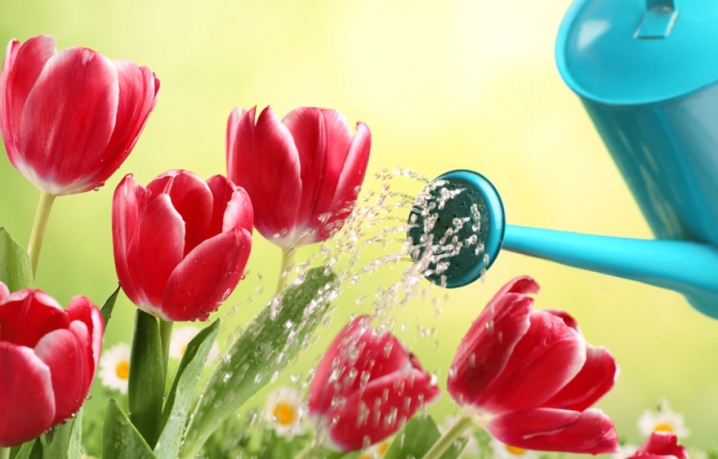
Insects can be fought with insecticidal soap, making a spray solution from it, or neem oil.
After the tulips have stopped blooming, they are in no hurry to cut the foliage, since it must first turn yellow and fall off on its own. Only in this way the bulb is sufficiently saturated with nutrients to successfully survive the wintering outside the ground. When the onion is ripe, it is covered with a brown crust. The seed is stored in a dark basement or garage, you can use paper bags.
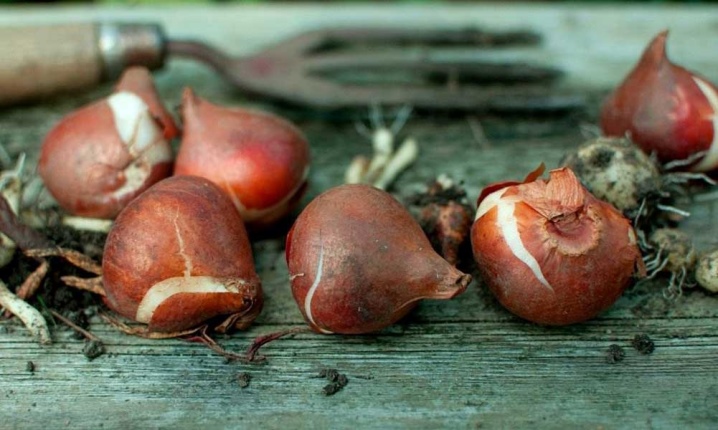
Some gardeners do not dig up the flower. This is done when the plant is grown as a flower bed decoration. Such bushes will not go for cutting, since varietal characteristics are lost, and the buds become smaller.

For more on Greig's tulips, see the video below.







































































































The comment was sent successfully.